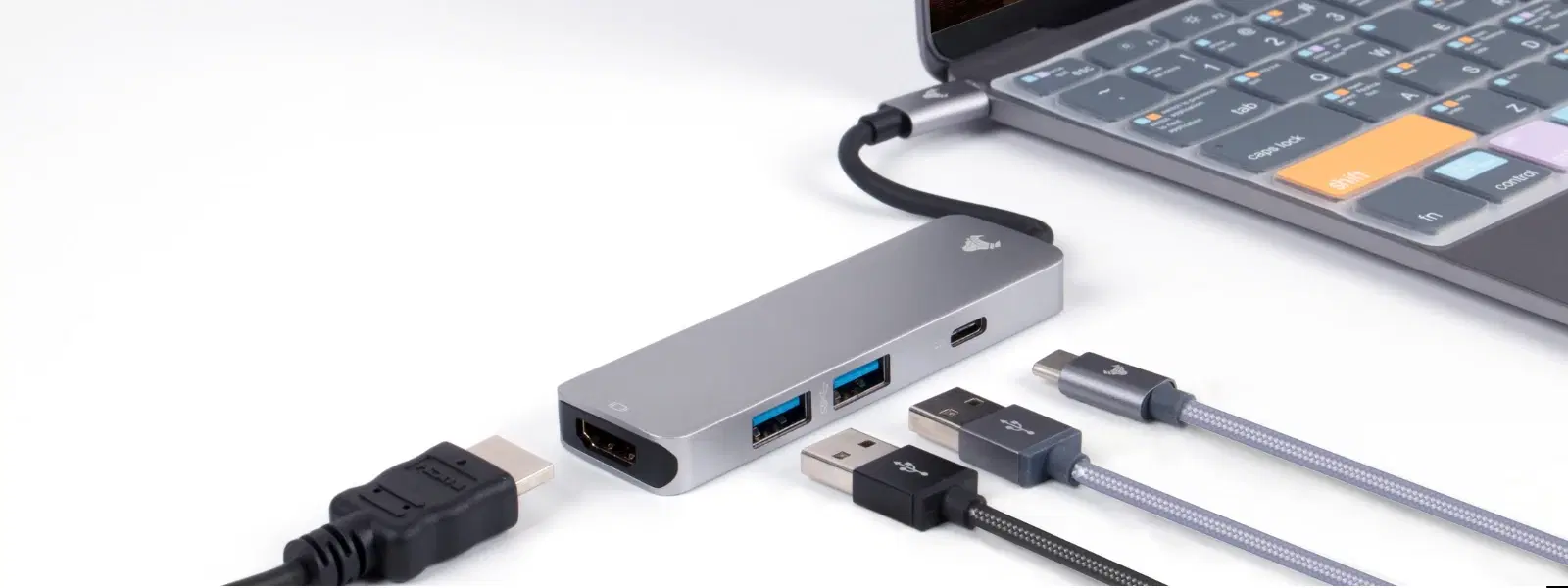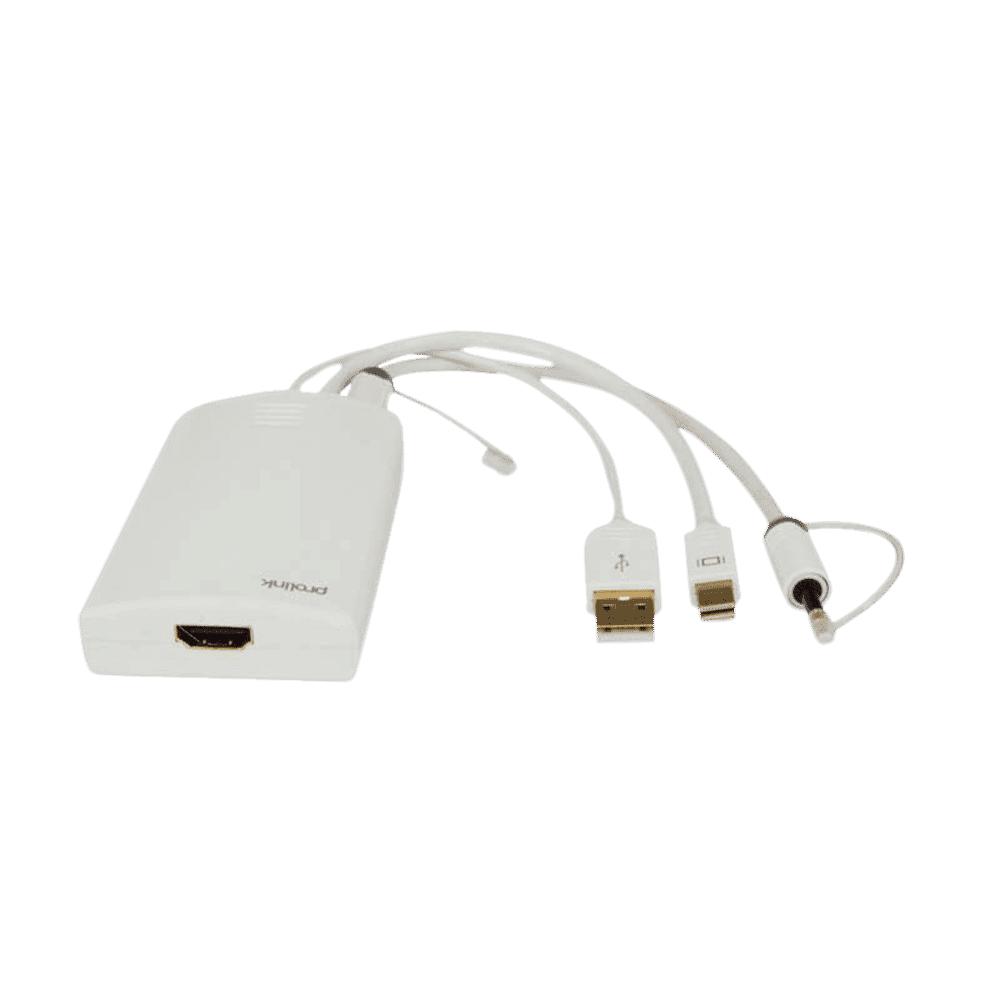
Consumer Electronics
•05 min read

Buy ultraprolink USB 3.1 Type C to USB 3.1 Type C, USB 3.0 Type A, HDMI USB Hub (Bi-Directional Flow, White) online at best prices from Croma. Check product details, reviews & more. Shop now!
USB ports are the unsung heroes in our everyday digital experiences. They provide a simple way to connect everything from keyboards and mice to external hard drives and smartphones. However, many users can face the frustration of non-responsive or disabled USB ports. In this article, we will explore practical ways to restore and optimise your USB port functionality. Whether you need to enable USB ports on a laptop or reconfigure settings to get things running smoothly, this guide offers clear, step-by-step advice you can trust.
USB ports, or Universal Serial Bus ports, are fundamental in connecting peripherals that enhance our computing experience. They allow data transfer and power supply to devices, meaning that in the realm of modern computing, even slight disruptions in their operation can cause notable inconvenience. In a world where digital connectivity is essential, troubleshooting issues related to these ports is paramount for maintaining productivity.
There are several reasons why USB ports might stop working or appear disabled. Some examples include hardware failure due to wear and tear, software conflicts or accidental system misconfigurations, or even intentional restrictions set by administrators. In some instances, BIOS settings or group policies may disable USB ports as a security precaution. By identifying the underlying issue, you can safely restore access and ensure continuous productivity.
Start by checking your computer’s Device Manager. When a USB port is disabled, connected devices may not be recognised or could display error messages instead of proper functionality. Signs to look for include a lack of response when devices are plugged in or the appearance of warning icons in the Device Manager. Carefully inspecting these indicators early on can help pinpoint the exact problem.
Before diving into more intricate approaches such as BIOS adjustments or registry edits, try some basic troubleshooting methods. Restart your computer, unplug and then replug devices, and allow the system to scan for hardware changes. If these simple steps do not resolve the issue, an inspection of BIOS settings or registry configurations may be in order.
Insight Corner: "Did You Know? USB ports can be disabled by administrators to enhance security in corporate environments. Understanding how to navigate BIOS settings and registry configurations is key to unlocking their functionality."
One effective approach to restore USB port functionality is through the BIOS. Restart your computer and enter the BIOS menu (usually by pressing a key such as F2 or Delete during startup). Once inside, navigate to the peripheral configuration settings. Look for options that refer to USB settings, and ensure that they are enabled. Always remember to save your changes before exiting the BIOS. This method is particularly helpful if the USB ports have been disabled at a system level for security or other purposes.
An alternative and often straightforward method is to utilise the Windows Device Manager. Locate the USB controllers section, right-click on each controller and select the option to uninstall. After uninstalling, restart your computer. The system should automatically detect and reinstall the necessary drivers. If not, you can manually initiate a scan for hardware changes. This process can re-enable and reset USB port functionality, restoring connectivity to your peripherals.
For users who are comfortable with advanced troubleshooting, the registry editor offers another solution. Begin by opening the registry editor and navigate to the related system keys responsible for USB configuration. Make the necessary changes as per your system requirements. It is essential to proceed with caution during this process, as incorrect changes to the registry can affect system stability. Always back up your registry before making any adjustments. Following these steps carefully should help you unlock and restore your USB port access.
There is an optimisation component that comes with configuring the USB ports, particularly for built-in laptop devices and PCs. You can adjust power management settings to ensure that your USB ports remain active even during sleep mode, ensuring seamless connectivity for essential peripherals like keyboards and mice. Additionally, check the permission settings to ensure that your operating system and administrative tools are not imposing unexpected restrictions. By fine-tuning these settings, you can convert your USB ports into reliable conduits for data transfer and device charging.
Preventive care plays a crucial role in maintaining long-term USB port functionality. Regularly updating your drivers is one simple yet effective practice to prevent issues. Furthermore, handle USB devices with care to avoid physical damage during connection and disconnection. There are also software tools available that can help monitor the health of your USB ports. Such preventive measures, coupled with best practices for hardware care, ensure that you enjoy consistent performance, reducing the chances of sudden disruptions.
Just as technology continues to connect us seamlessly across various digital platforms, your devices should work in harmony with you. Repairing and optimising USB ports plays a key role in that equilibrium. At the same time, modern platforms like Tata Neu offer a digital shopping experience backed by reliable after-sales support and innovative features like NeuCoins rewards. While you work on optimising your USB ports, remember that a range of smart solutions is available if you ever decide to explore the latest consumer electronics that make everyday life simpler and more productive.
These insights not only ensure that your peripheral devices work flawlessly but also align with an overall approach of continuous learning and improvement. Whether you are a tech enthusiast, family, young professional, or student, understanding and addressing issues such as a locked or disabled USB port can truly elevate your daily digital interactions. And with balanced, empathetic advice at hand, you can navigate any technical challenge with confidence and assurance. Just as you optimise your digital devices for efficiency, enjoy the benefits of a reliable platform that rewards your loyalty with NeuCoins each time you engage.
Check the Device Manager for disabled USB controllers, update the drivers, or go into the BIOS settings to re-enable their functionality.
A USB port may be disabled due to software configurations, hardware malfunctions, security settings in BIOS, or restrictions imposed by administrative controls.
Common reasons include outdated or corrupted drivers, physical damage, BIOS settings configured to disable the port, or even group policy restrictions on the system.
You can enable USB permissions via registry editor changes, adjusting settings in the group policy, or by modifying the system's administrative configuration.
In conclusion, ensuring your USB ports are fully enabled and optimised is crucial for keeping your devices connected and your workflow uninterrupted. The methods discussed here provide clear and actionable steps to diagnose, troubleshoot, and fix issues related to USB connectivity. Adopting a proactive maintenance routine can further help avoid recurring problems, leaving you more time to focus on your passions—whether that's working on exciting tech projects or enjoying a digital lifestyle that rewards smart decisions.
This article exemplifies a thoughtful approach to technology, one that emphasises clear guidance and empathetic service. Much like how Tata Neu provides users with seamless shopping experiences enhanced by rewarding NeuCoins benefits, optimising your device settings ensures a smoother operation in your day-to-day tech use. Embrace the hands-on approach and secure the digital performance you deserve, all while enjoying the assurance of trusted expertise behind every recommendation.